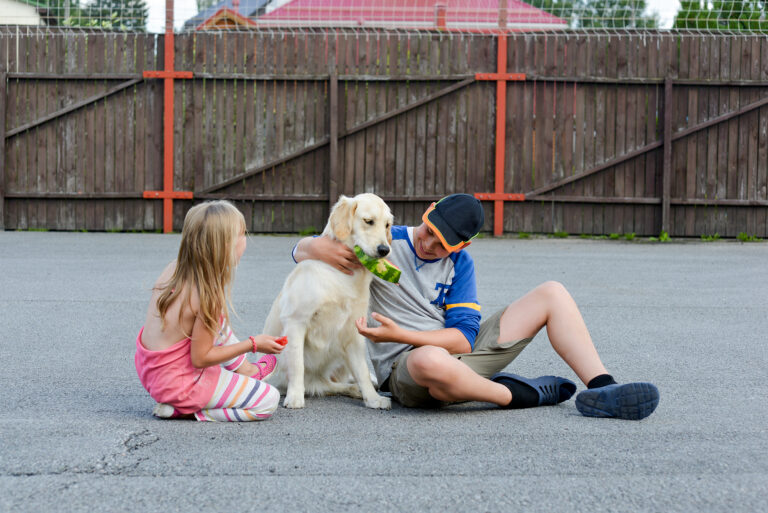As spring sets in and nature comes back to life, so does a less welcome visitor—allergy season. While humans are familiar with sneezing and watery eyes, dogs often experience spring allergies in a different way: through their skin. Itchy skin, hot spots, excessive licking, and hair loss are all signs that your pup may be reacting to seasonal allergens.
If your dog is scratching more than usual or seems irritated during springtime walks, they could be dealing with environmental allergies. Here’s how to recognize the signs, manage the discomfort, and give your dog the relief they need to enjoy spring as much as you do.
Table of Contents
Understanding Spring Allergies in Dogs
Just like people, dogs can be allergic to pollen, grasses, mold spores, and dust mites—many of which become more prevalent in the spring. However, instead of respiratory symptoms, dogs often show allergic reactions through their skin and ears.
This condition, called atopic dermatitis, is a chronic allergic skin disease. It can flare up during seasonal changes, especially in breeds predisposed to skin issues, like Golden Retrievers, Bulldogs, and Terriers.
The allergens don’t need to be ingested to cause a reaction—they can be inhaled or absorbed through the skin, triggering an immune response that leads to inflammation and itching.
Common Signs Your Dog May Have Spring Allergies
Spring-related skin allergies may present in several ways. Some of the most common symptoms include:
- Persistent itching, especially around the paws, face, ears, belly, or groin area
- Red, inflamed skin or rashes
- Excessive licking or chewing, particularly on the paws or legs
- Recurrent ear infections or head shaking
- Hot spots—raw, oozing patches caused by constant scratching or licking
- Hair thinning or bald spots from constant irritation
Because many of these symptoms can resemble flea infestations, food allergies, or other skin conditions, it’s essential to get a veterinary diagnosis for proper treatment.
Managing Itchy Skin During Allergy Season
Managing your dog’s springtime itching requires a combination of prevention, treatment, and ongoing care. Here’s how you can help soothe their skin and reduce allergic flare-ups:
- Regular Baths with Hypoallergenic Shampoos
Bathing your dog once a week with a gentle, medicated, or oatmeal-based shampoo can help wash away allergens from the skin and coat. Choose shampoos formulated for sensitive skin or those containing ingredients like aloe vera, tea tree oil, or hydrocortisone for anti-itch relief. - Wipe Downs After Walks
After outdoor walks or playtime, use dog-safe wipes or a damp cloth to clean your dog’s paws, belly, and legs. This helps remove pollen or grass residue before it causes irritation. - Frequent Brushing
Brushing your dog regularly helps remove allergens and loose fur while distributing natural oils that protect the skin. For double-coated or long-haired breeds, brushing also helps prevent matting and hot spots. - Improve Indoor Air Quality
Use HEPA filters in your home and vacuum frequently to reduce indoor allergens. Wash your dog’s bedding often and keep windows closed on high-pollen days if your dog is especially sensitive. - Diet and Supplements
A balanced diet rich in omega-3 and omega-6 fatty acids can improve skin health and reduce inflammation. Many vets recommend fish oil supplements to help maintain a healthy coat and soothe allergic skin. Probiotics may also support immune function and improve tolerance to allergens. - Prescription Relief When Needed
If your dog’s itching becomes severe or persistent, your vet may prescribe antihistamines, corticosteroids, or newer medications like Apoquel or Cytopoint, which are designed to specifically target allergic itching. In some cases, allergy testing and immunotherapy (allergy shots or drops) may be recommended for long-term management.
Don’t Confuse Allergies with Fleas
Spring is also flea season, and flea allergy dermatitis is one of the most common causes of intense itching in dogs. Even a single flea bite can trigger an allergic reaction. If you haven’t already started flea prevention, now is the time to begin.
Look for small black specks (flea dirt) in your dog’s coat and monitor for signs of chewing near the tail base. Preventive flea treatments are available in topical, oral, and collar forms—ask your vet for the best choice based on your dog’s lifestyle.
In Conclusion

Spring should be a time of joy for your dog—not a season of constant itching and discomfort. While allergies are a common problem, they’re also highly manageable with the right approach. By recognizing the signs early, sticking to a consistent skin care routine, and working closely with your veterinarian, you can help your dog sail through allergy season feeling comfortable and happy.
With a little extra care, your dog can enjoy the sights, smells, and adventures of spring—without the scratch.







